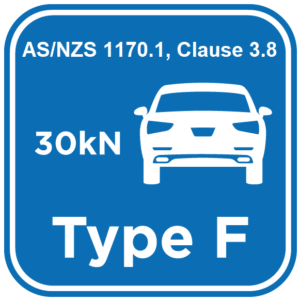RHINO-STOP® Guardrail, developed by Safe Direction, combines the strength of w-beam guardrail with energy absorbing RHINO-Posts®. The yielding behaviour of the RHINO-STOP® baseplates absorb vehicle impact energy, reducing the peak loads transferred to the anchor bolts. The deflection of the system allows for greater load transfer to the adjacent posts, sharing the impact load from the vehicle.
RHINO-STOP® Guardrail provides an economical crash barrier solution for shielding elevated parking areas and may be configured with handrail and mesh infill providing pedestrian fall protection. The fully modular system uses off-the-shelf components facilitating rapid supply and installation and can be customised on site to suit specific project dimensions.



